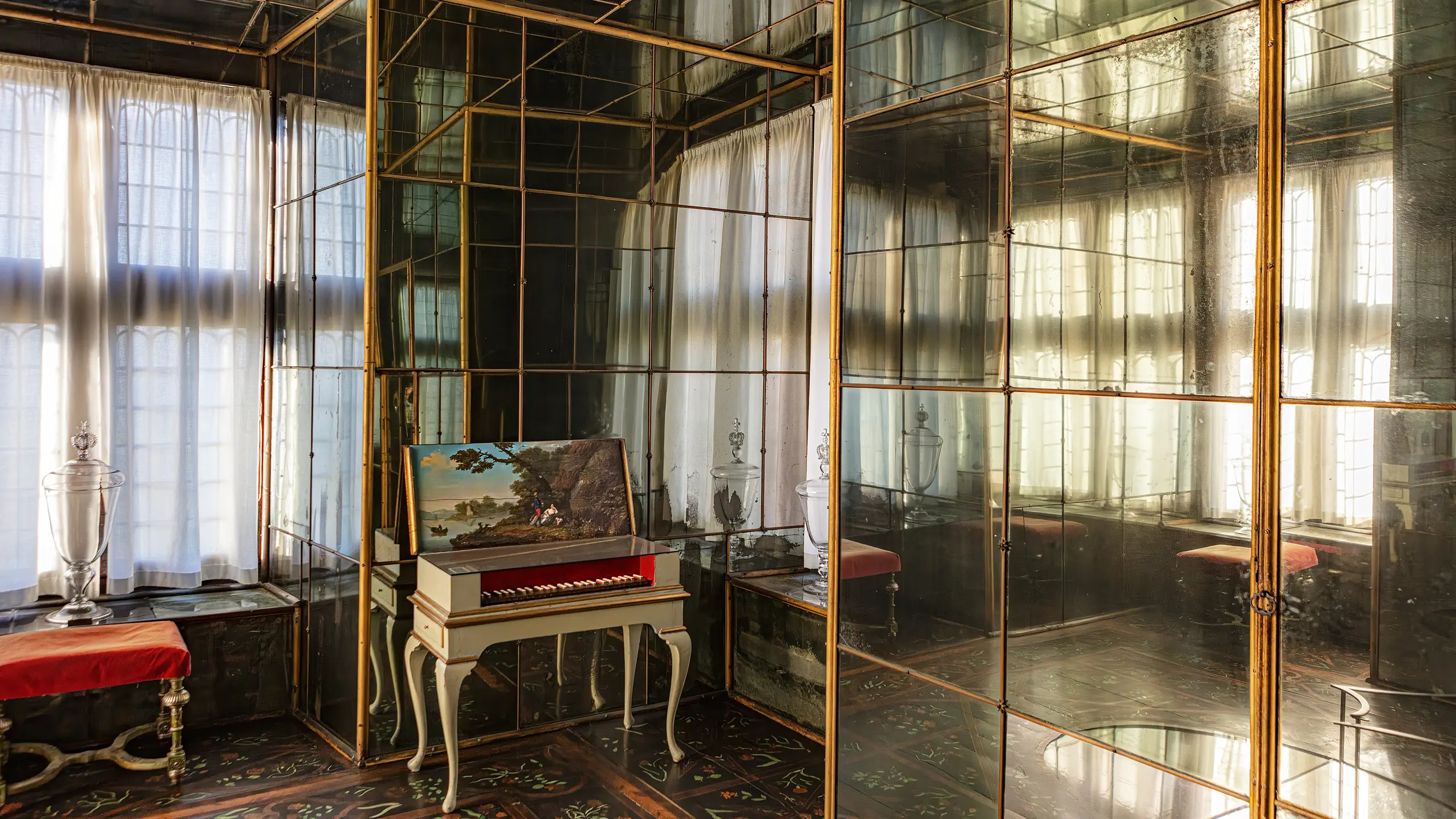The Mirror Cabinet (room 13A)
The Mirror Cabinet at Rosenborg Castle is a fascinating example of the lavish style and luxury of the baroque – and of Frederik IV’s bawdy side.

Surrounded by mirrors
Inspired by the Hall of Mirrors at Versailles
This small Mirror Cabinet was originally created for Christian V in 1684–1687. Some time later, in 1705, Frederik IV added the parquet floor with the embedded mirror. Now, the room not only had mirrors on the walls and in the ceiling but also on part of the floor.
The inspiration came from the Hall of Mirrors at Versailles in France, the French Louis XIV’s summer residence since 1682. During this period – known as the baroque (circa 1660 to 1740) – many royal residences around Europe added a mirror room as the innermost and most intimate part of the king’s suite, often in connection with the bedchamber. Naturally, the Danish King also needed to have such a room, albeit on a significantly smaller scale than the French Hall or Mirrors in Versailles.
The Mirror Room during the reign of Frederik IV
Frederik IV’s bedchamber was on the ground level, in the room we now call the Dark Room. From here, he had direct access to the Mirror Room via the spiral staircase in the Stair Turret. If you look carefully when you are in the Mirror Cabinet, you can see the built-in jib doors in either side of the room.
Mirror rooms were the height of extravagance at this time, when mirrors were outrageously expensive. This meant that it was an extraordinary experience to see oneself reflected in the ceiling, on the walls and in the oval mirror on the floor. The mirror in the floor was probably installed especially with female visitors in mind. When the Mirror Cabinet was installed, fashion called for large hoop skirts, which puffed up the women’s skirts. Thus, the mirror in the floor will have offered an excellent view of whatever the ladies were wearing under their skirts, which was hardly unintentional.
It should be added here that Frederik IV had a daybed and his collection of erotica conveniently placed in a small side room to the Mirror Cabinet – a perfect opportunity for a so-called dalliance with a young lady.
previous room <- | -> next room
Objects in the room
If you are at the museum, you can admire the fascinating objects in the room and read more about them below.
The descriptions are brief and generally do not include images. They are intended as an added resource if you would like more detailed information about an item, such as who made it, its origin and its meaning.